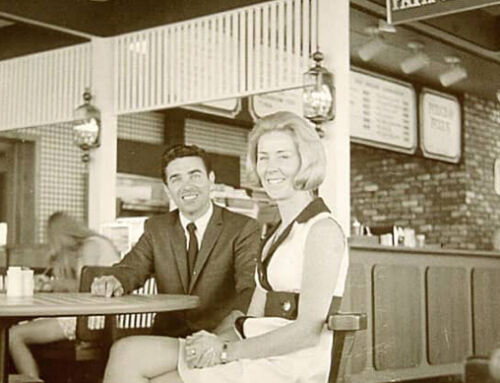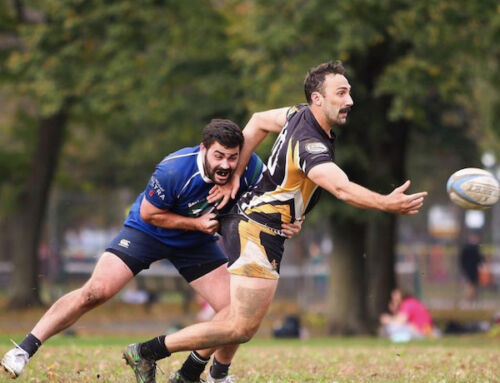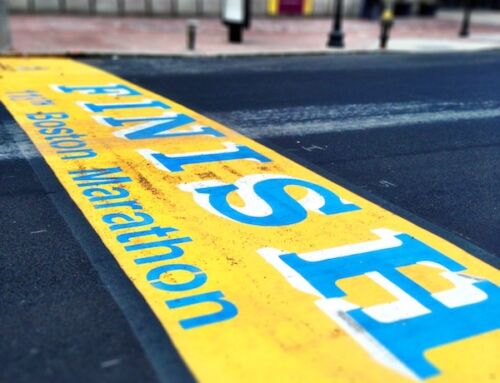We are entering into St. Patrick’s Day season in the neighborhood! The St. Patrick’s Day Parade in South Boston is technically The Evacuation Day Parade. What’s Evacuation Day, you ask? Well, this history lesson is dedicated to not only Evacuation Day but Thomas Park on Dorchester Heights. Now, we’ve learned in prior History Lessons, why Dorchester Heights is called Dorchester Heights and not South Boston Heights (refresher – it was part of Dorchester, a separate town from Boston until Boston annexed it in 1804) but why Thomas? Who was this Thomas? Why is there a park named after him? Keep reading to find out!
We need to go back in time to the American Revolution. The Siege of Boston lasted from April 1775 to March 1776. A siege, according to Google, is a military operation in which enemy forces surround a town or building, cutting off supplies, with the aim of compelling the surrender of those inside. In this case, the American Revolutionaries, or the Continental Army, were the “enemy forces,” commanded for most of the siege by George Washington, and they were besieging British-occupied Boston. We are getting closer to “our” Thomas, I promise!
The Massachusetts Provincial Congress (1774–1780) was the provisional government created in Massachusetts early in the American Revolution. They appointed Marshfield-born John Thomas a “General Officer” in February 1775 based on his successes during King George’s War and the French and Indian War. In June of that year, John Thomas was made a Brigadier General by the Continental Congress and was given precedence over all other Brigadiers in the Army.
Thomas, who was also a medical doctor, created and recruited the Second Massachusetts Regiment, the militia for Plymouth County, to fight against the British. Thomas brought these troops from Plymouth County to help the Continental forces in the Siege of Boston against the British.
Overnight on March 4th, 1776, John Thomas led his division in fortifying Dorchester Heights. Thomas was tasked with reinforcing the defenses on the Heights and using the elevation there to threaten the British fleet. The troops menaced the British with the cannons brought to the Heights by Henry Knox, Chief Artillery Officer of the Continental Army and Boston native. Knox brought the cannons from Fort Ticonderoga (in New York) to Boston. The location of the Heights, combined with the long range cannons, were key in ending the British occupation of Boston on March 17th, 1776. The British left, or evacuated, Boston that day which is what we celebrate every March 17th up on the Heights!
After helping to end the siege Thomas was named a Major General of the Continental Army and put in charge of the Invasion of Canada. Unfortunately, there was a smallpox epidemic that decimated the American forces and took the life of General Thomas in June of 1776.
As Boston grew and developed, many of its hills were used as building materials and the landscape shifted and changed. Dorchester Heights, which comprised a few hills, was left with only one: Telegraph Hill. The street around the Hill? Eventually, was named “Thomas” after General Thomas. The city built a reservoir, which was opened on November 20th, 1849, on one side of Telegraph Hill to supply the people of South Boston with fresh water from Lake Cochituate. In the 1850s, the city turned the other side of the hill into a park named after General Thomas. According to the National Park Service, Thomas Park was one of Boston’s first ever public parks.
By the 1870s, the reservoir was no longer needed but was kept partially full of water to help fight fires. South Boston might not have needed a reservoir anymore but it did need a high school. The city owned the land already so the reservoir was filled in and Southie High was built there in the beginning of the 20th century. In 1898, the General Court of Massachusetts commissioned a monument for Dorchester Heights to honor the victory over the British and the end of British Occupation. The monument, that we know and love, was completed in 1902, and was designed by Boston architects Peabody and Stearns. The site became a National Historic Site in 1951, and its management was shared by the city and the National Park Service until 1980 when ownership of the monument and the park was officially given to the United States Government.
Every time we talk about going up to Thomas Park to relax or to enjoy the view or to walk our dogs (speaking of dogs please keep them leashed up on the Heights!) we are paying homage to General John Thomas, a man who was vital to ending the Siege of Boston.
Lower End homeowner since 2005. Mom of three BPS kids. Friend to all except those who don’t clean up after their dogs and/or who put their trash out in kitchen bags (seriously, people, it’s not that hard to use a barrel). Queen of the Nerds (okay that one is only in my dreams).






As a graduate of Southie High, I had to write an essay every year about Evacuation Day. Thanks for your comprehensive article.
My grandmother was sponsored into Boston from Ireland by her cousin Minnie Campbell who ran a boarding house in Boston. I think Minnie Court was named after that cousin. My grandmother met my grandfather in a park so I am curious to know if it was Thomas Park. Thanks to your article, I see it was there at the turn of the 20th century, so who knows? 😊
I was born & raised on Telegraph St. Did you know that Mercer ,Gates & Knowlton Streets were named after Officer’s of the continental army . spent my childhood up “THE HEIGHTS “
Wonderful, informative article!! I grew up in Southie, loved spending time up at the Heights but really never knew all the details behind the name just some. Thanks for posting this.
I wonder what types of artifacts are still there underground from that era? Military, personal items? Maybe even tunnels?
I am surprised. I never knew those (Mercer, Gates and Knowlton) Streets were named after Officers of the Continental Army. My mother grew up at 37 Mercer Street: The Fords. I always remember my Grandmother talking about families on Gates and Knowlton Sts. She always referred to the family Name and the Street where they lived. Almost like when people said they were from Southie and where asked where they gave the name of the Parish. e.g St Augustine etc.
Hello MrThotnton, I enjoyed the article submitted by you. My father’s family of 14 children grew up on Merecer St. After the children grew up and went on about their own lives their father JOHN O’Connell remained in the family home alone until my father a son named Vincent joined Senior O ‘Connell with his family in1942. We were 3 girls. We 3 girls became educated. 1 to Emanuel College and 2 @ Carney Hosp. School of Nursins. As of this date 1 graduateCarney Hosp still living ,that is me!.I am Frances M. -I married Francis X Saunders also from South Boston – Gates St. He passed away a few years ago My 2 daughters and 1 son live here in Jacksonville .
I can only say many times over I also halve been blessed ! Frances M O CONNELL SAUNDERS.
I rented an apartment at #7/9 Thomas Pk. In 1982, top floor, had an incredible view of Boston.,
Whoever has that apartment now must be happy with it, but maybe not….my rent was $350 a mo.
What could it be now..hmmm ?
Those were the days my friends.